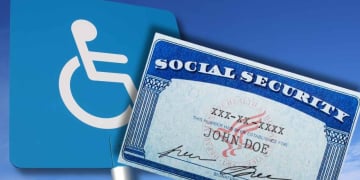If you’re wondering when your Social Security payment will arrive this June 2025, we’ve compiled and clarified the dates. As always, the Social Security Administration (SSA) distributes deposits based on your date of birth for beneficiaries who claimed their benefits after May 1997.
Look at your birthday to find out your exact payment date. If you were born between the 1st and 10th of any month, your money will arrive on Wednesday, June 11th. If your birthday is between the 11th and 20th, mark Wednesday, June 18th on your calendar.
And for those born between the 21st and 31st, your payment will be made on Wednesday, June 25th. It’s actually simple when you see a made-simple explanation, like we just did for you.
If you receive retirement along with SSI, there is a small detail you should know
There’s something you should know if you receive Supplemental Security Income (SSI) along with retirement. There was a small change in June. Because June 1st fell on a weekend, the SSI payment that would normally be due in June was moved up to Friday, May 30th. This means there won’t be any SSI payments in June, because you received that payment in May.
Now, returning to Social Security benefits—which will arrive without delay or change on the expected date—let’s take a look at the maximum amounts you can receive if you meet certain requirements.
The maximum amount you can receive from Social Security in 2025 depends a lot on when you decide to hang up your gloves. Are you planning to retire soon or hang on a little longer? That makes a difference in your monthly check.
If you retire at the minimum age of 62, the maximum monthly benefit is $2,831. But if you wait until full retirement age (67 for those born in 1960 or later), that maximum rises to $4,018 per month. And if you stay until 70? Then the benefit skyrockets to a maximum of $5,108 per month.
Of course, reaching these limits isn’t easy. You need to have contributed at the maximum possible level for at least 35 years of your working life. Every year you delay retirement past your full retirement age adds credits that significantly increase your monthly payment. It’s worth considering if your health and job allow it.
The controversial issue of Social Security overpayments
The SSA has also been adjusting its rules on how it recovers money if you were mistakenly overpaid. This is called “clawback,” or overpayment recovery, and in 2025 there has been quite a bit of movement and controversy surrounding it. Policies changed rapidly within a few months.
Before March 2025, if you were overpaid, the SSA could only withhold a maximum of 10% of your monthly benefit to recover it. But on March 27, they made a radical change: for new cases, they increased the possible withholding to 100% of the monthly payment.
The measure generated a great deal of criticism and public concern. So much so that just a month later, on April 25, the SSA partially reversed course. For new overpayment cases after that date, the maximum withholding limit was lowered to 50% of your monthly benefit.
If you’re notified of an overpayment, don’t be paralyzed. You have rights. You can appeal the decision if you believe there was a mistake, or you can request an exemption if you acknowledge the overpayment but prove it wasn’t your fault and that paying it would cause you extreme hardship. The crucial thing is to act quickly.
While your appeal or exemption request is pending, the SSA cannot garnish your benefits. Don’t waste time; file the necessary documents to protect your income. It’s your right to defend yourself in such a situation.
Late student loans impact Social Security payments
Here’s another issue that worries some older beneficiaries: unpaid student loans. It turns out the federal government has pretty strong powers to collect federal student debt. How? By garnishing other sources of money you’re owed, like tax refunds… or even part of your Social Security check.
If you have defaulted federal student loans, the government could reduce your Social Security benefits (both retirement and disability) by up to 15% to cover that debt. This, of course, directly impacts the money you get in your pocket each month. A significant blow to a tight budget.
The numbers are alarming: an estimated 450,000 federal loan borrowers, age 62 and older, are in default and likely receiving Social Security benefits. These are people for whom that 15% reduction could mean choosing between paying for medicine, food, or transportation.
There was a last-minute change in policy. Although the resumption of these collections, including Social Security garnishments, was initially announced, Donald Trump Administration’s Department of Education has put a pause on this specific plan. That is, for now, they are not garnishing Social Security checks for student debt. A temporary reprieve.




